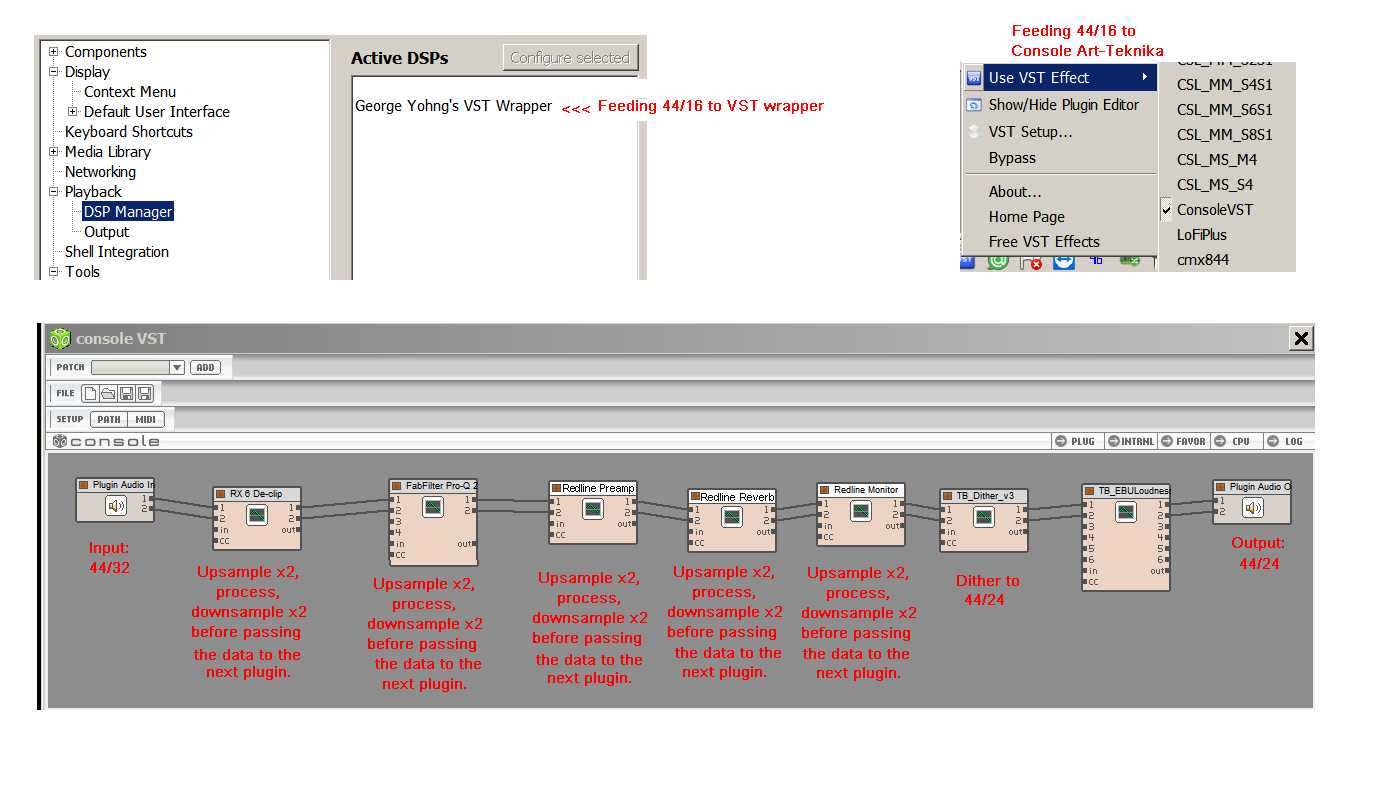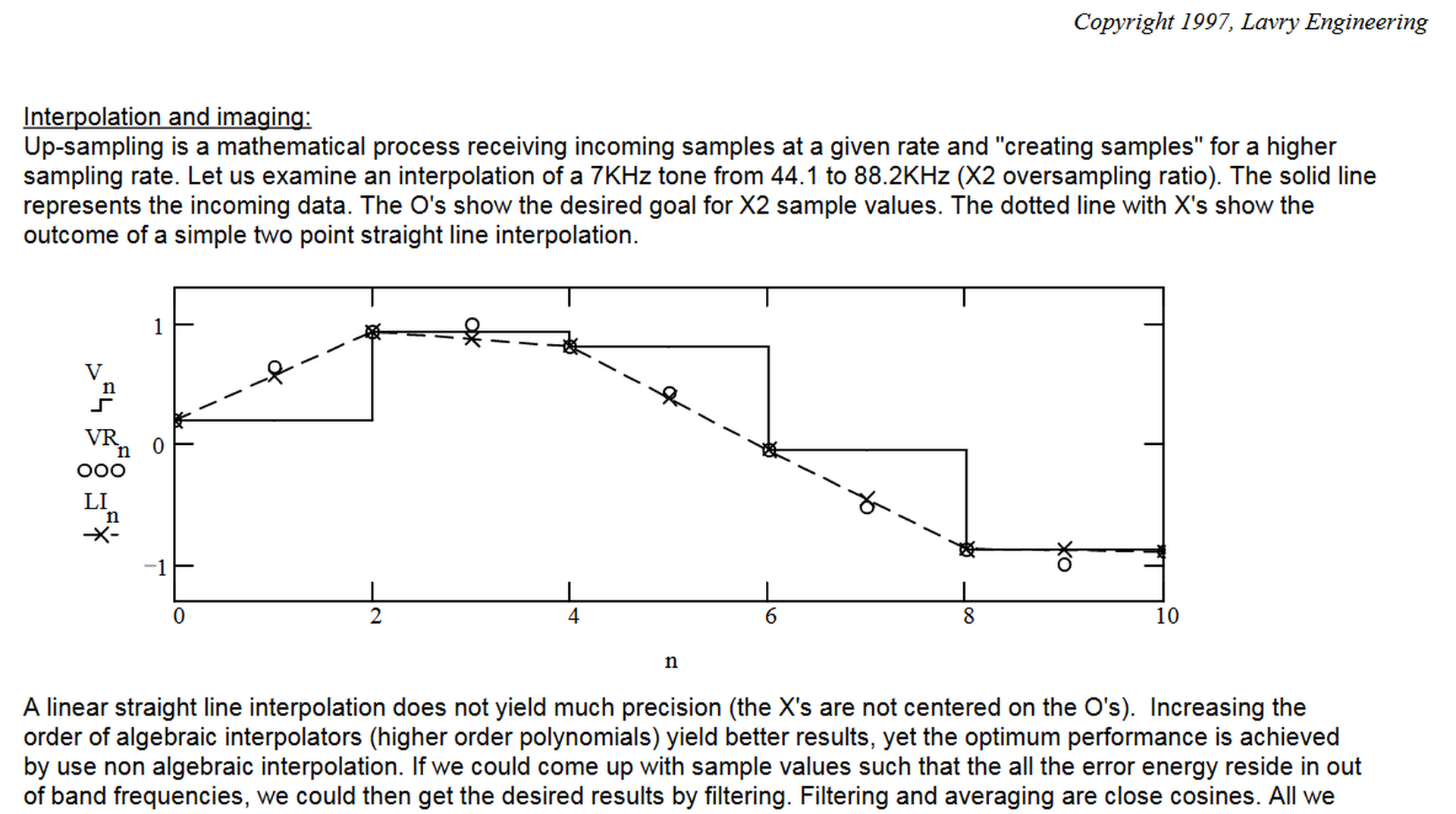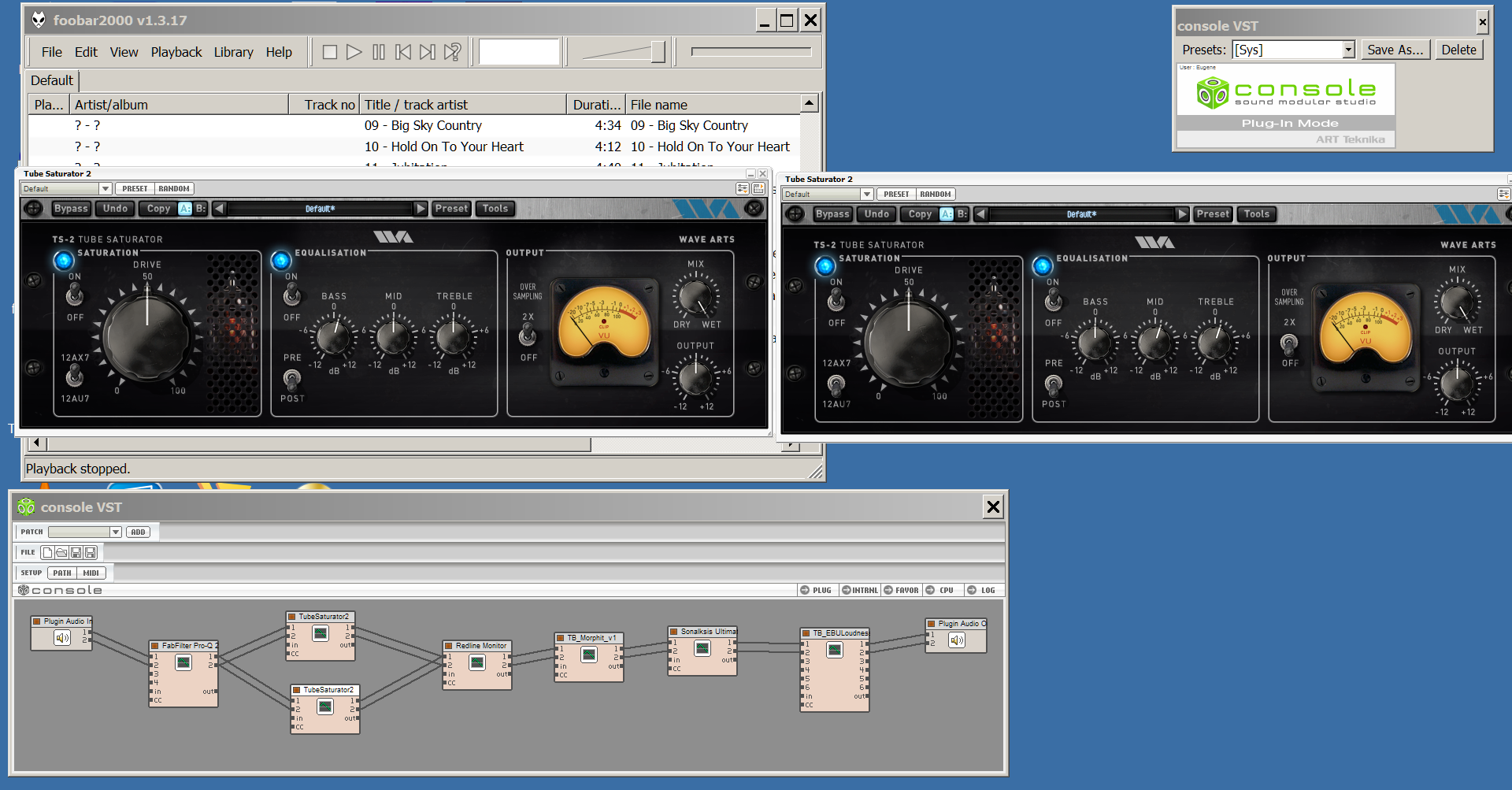ironmine
500+ Head-Fier
I'm NOT implying that up/down sampling is always harmless
I am sorry, but you implied it when you wrote (let me quote you):
"those few [plugins] which do [benefit from a higher sample rate] now simply up/down sample where necessary".
"Your fear of up/down sampling ... is unwarranted."
Looks like, for you, whatever happens in a plugin, including upsampling/downsampling, is harmless/beneficial. But when I propose to do the same upsampling outside plugins, you are against it. Why such prejudice?
you haven't explained why adding trailing zeros one step early "improves accuracy"
I already told you. It's not me who "adds zeros". It's the upsampler which increases the bitrate from 16 to 32 in the process of upsampling. Look - you take 44/16 and feed it to the 32-bit upsampler and choose to upsample the signal x2 and, presto, you end up with 88/32 on your hands. That's simple. Going from 16-bit to 32-bit is the natural result of upsampling in the dBpoweramp/SSRC upsampler. What do you expect me to do? Truncate the upsampled signal back to 16-bit? It's not reasonable to do so, because now these extra bits are not zeros any more, they contain useful info.
or how doubling the data and bandwidth, where no frequencies exist, "improves accuracy".
The sample rate is doubled not for the purpose of recreating frequencies which don't exist. You know it perfectly well. Let me quote you:
"Those plugins which do legitimately upsample would do so at x2 (either 88.2 or 96kHz) as any theoretical benefits of filters and any non-linear processes are perfectly addressed by those sample rates" and "I sometimes used to run sessions at 96kHz as many plugins operated audibly better at that rate, many/most soft-synths, compressors, some EQs and various others."
The sample rate is doubled to improve the precision and accuracy of computations and to sound, in your words, "audibly better".
Why don't you ask plugin makers why they oversample inside their plugins? Don't these naive fools know that "there are no frequencies"?
Until you do, there is no basis for your advice to others!
No. Until you prove (to me and also to Bob Katz and to Aleskey Vaneyev) that re-sampling up and down, up and down, many times, when the audio data are transmitted from one plugin to another, is better than upsampling it once before entering a chain of vst-plugins, you should refrain from discouraging users to use the dBpoweramp/SSRC upsampler in Foobar.
However, you cannot make that assumption! Those plugins which do legitimately upsample would do so at x2 (either 88.2 or 96kHz) as any theoretical benefits of filters and any non-linear processes are perfectly addressed by those sample rates
Ok! Let's suppose plugins oversample x2. I mean, if the signal 88 or 96 or higher (176 or 192), they just operate at these rates. But if the incoming signal is 44 or 48, then they oversample by 2.
This is what happens if you follow my advice and upsample in Foobar prior to feeding the signal to a vst-host (Foobar is 32bit and vst-host is also 32bit):

And this is how it looks if I follow your advice:

























